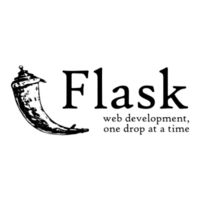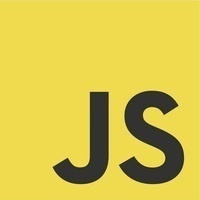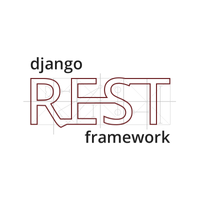What is Hamilton and what are its top alternatives?
Top Alternatives to Hamilton
 ExpressJS
ExpressJSExpress is a minimal and flexible node.js web application framework, providing a robust set of features for building single and multi-page, and hybrid web applications. ...
 Flask
FlaskFlask is intended for getting started very quickly and was developed with best intentions in mind. ...
 Django REST framework
Django REST frameworkIt is a powerful and flexible toolkit that makes it easy to build Web APIs.
 Sinatra
SinatraSinatra is a DSL for quickly creating web applications in Ruby with minimal effort. ...
 FastAPI
FastAPIIt is a modern, fast (high-performance), web framework for building APIs with Python 3.6+ based on standard Python type hints. ...
 Koa
KoaKoa aims to be a smaller, more expressive, and more robust foundation for web applications and APIs. Through leveraging generators Koa allows you to ditch callbacks and greatly increase error-handling. Koa does not bundle any middleware. ...
 TypeORM
TypeORMIt supports both Active Record and Data Mapper patterns, unlike all other JavaScript ORMs currently in existence, which means you can write high quality, loosely coupled, scalable, maintainable applications the most productive way. ...
 Guzzle
GuzzleGuzzle is a PHP HTTP client that makes it easy to send HTTP requests and trivial to integrate with web services. ...
Hamilton alternatives & related posts
ExpressJS
- Simple380
- Node.js336
- Javascript244
- High performance193
- Robust routing152
- Middlewares73
- Open source71
- Great community59
- Hybrid web applications37
- Well documented16
- Rapid development9
- Sinatra inspired9
- Socket connection7
- Isomorphic js.. superfast and easy7
- Light weight5
- Resource available for learning4
- Npm4
- Event loop3
- Callbacks3
- Data stream2
- Not python27
- Overrated17
- No multithreading14
- Javascript9
- Not fast5
- Easily Insecure for Novices2
related ExpressJS posts
Our whole Node.js backend stack consists of the following tools:
- Lerna as a tool for multi package and multi repository management
- npm as package manager
- NestJS as Node.js framework
- TypeScript as programming language
- ExpressJS as web server
- Swagger UI for visualizing and interacting with the API’s resources
- Postman as a tool for API development
- TypeORM as object relational mapping layer
- JSON Web Token for access token management
The main reason we have chosen Node.js over PHP is related to the following artifacts:
- Made for the web and widely in use: Node.js is a software platform for developing server-side network services. Well-known projects that rely on Node.js include the blogging software Ghost, the project management tool Trello and the operating system WebOS. Node.js requires the JavaScript runtime environment V8, which was specially developed by Google for the popular Chrome browser. This guarantees a very resource-saving architecture, which qualifies Node.js especially for the operation of a web server. Ryan Dahl, the developer of Node.js, released the first stable version on May 27, 2009. He developed Node.js out of dissatisfaction with the possibilities that JavaScript offered at the time. The basic functionality of Node.js has been mapped with JavaScript since the first version, which can be expanded with a large number of different modules. The current package managers (npm or Yarn) for Node.js know more than 1,000,000 of these modules.
- Fast server-side solutions: Node.js adopts the JavaScript "event-loop" to create non-blocking I/O applications that conveniently serve simultaneous events. With the standard available asynchronous processing within JavaScript/TypeScript, highly scalable, server-side solutions can be realized. The efficient use of the CPU and the RAM is maximized and more simultaneous requests can be processed than with conventional multi-thread servers.
- A language along the entire stack: Widely used frameworks such as React or AngularJS or Vue.js, which we prefer, are written in JavaScript/TypeScript. If Node.js is now used on the server side, you can use all the advantages of a uniform script language throughout the entire application development. The same language in the back- and frontend simplifies the maintenance of the application and also the coordination within the development team.
- Flexibility: Node.js sets very few strict dependencies, rules and guidelines and thus grants a high degree of flexibility in application development. There are no strict conventions so that the appropriate architecture, design structures, modules and features can be freely selected for the development.
Repost
Overview: To put it simply, we plan to use the MERN stack to build our web application. MongoDB will be used as our primary database. We will use ExpressJS alongside Node.js to set up our API endpoints. Additionally, we plan to use React to build our SPA on the client side and use Redis on the server side as our primary caching solution. Initially, while working on the project, we plan to deploy our server and client both on Heroku . However, Heroku is very limited and we will need the benefits of an Infrastructure as a Service so we will use Amazon EC2 to later deploy our final version of the application.
Serverside: nodemon will allow us to automatically restart a running instance of our node app when files changes take place. We decided to use MongoDB because it is a non relational database which uses the Document Object Model. This allows a lot of flexibility as compared to a RDMS like SQL which requires a very structural model of data that does not change too much. Another strength of MongoDB is its ease in scalability. We will use Mongoose along side MongoDB to model our application data. Additionally, we will host our MongoDB cluster remotely on MongoDB Atlas. Bcrypt will be used to encrypt user passwords that will be stored in the DB. This is to avoid the risks of storing plain text passwords. Moreover, we will use Cloudinary to store images uploaded by the user. We will also use the Twilio SendGrid API to enable automated emails sent by our application. To protect private API endpoints, we will use JSON Web Token and Passport. Also, PayPal will be used as a payment gateway to accept payments from users.
Client Side: As mentioned earlier, we will use React to build our SPA. React uses a virtual DOM which is very efficient in rendering a page. Also React will allow us to reuse components. Furthermore, it is very popular and there is a large community that uses React so it can be helpful if we run into issues. We also plan to make a cross platform mobile application later and using React will allow us to reuse a lot of our code with React Native. Redux will be used to manage state. Redux works great with React and will help us manage a global state in the app and avoid the complications of each component having its own state. Additionally, we will use Bootstrap components and custom CSS to style our app.
Other: Git will be used for version control. During the later stages of our project, we will use Google Analytics to collect useful data regarding user interactions. Moreover, Slack will be our primary communication tool. Also, we will use Visual Studio Code as our primary code editor because it is very light weight and has a wide variety of extensions that will boost productivity. Postman will be used to interact with and debug our API endpoints.
Flask
- Flexibilty14
- For it flexibility10
- Flexibilty and easy to use9
- Flask8
- User friendly7
- Secured6
- Unopinionated5
- Orm3
- Secure2
- Beautiful code1
- Easy to get started1
- Easy to develop and maintain applications1
- Not JS1
- Easy to use1
- Documentation1
- Python1
- Minimal1
- Lightweight1
- Easy to setup and get it going1
- Perfect for small to large projects with superb docs.1
- Easy to integrate1
- Speed1
- Get started quickly1
- Customizable1
- Simple to use1
- Powerful1
- Rapid development1
- Open source0
- Well designed0
- Productive0
- Awesome0
- Expressive0
- Love it0
- Not JS10
- Context7
- Not fast5
- Don't has many module as in spring1
related Flask posts
One of our top priorities at Pinterest is fostering a safe and trustworthy experience for all Pinners. As Pinterest’s user base and ads business grow, the review volume has been increasing exponentially, and more content types require moderation support. To solve greater engineering and operational challenges at scale, we needed a highly-reliable and performant system to detect, report, evaluate, and act on abusive content and users and so we created Pinqueue.
Pinqueue-3.0 serves as a generic platform for content moderation and human labeling. Under the hood, Pinqueue3.0 is a Flask + React app powered by Pinterest’s very own Gestalt UI framework. On the backend, Pinqueue3.0 heavily relies on PinLater, a Pinterest-built reliable asynchronous job execution system, to handle the requests for enqueueing and action-taking. Using PinLater has significantly strengthened Pinqueue3.0’s overall infra with its capability of processing a massive load of events with configurable retry policies.
Hundreds of millions of people around the world use Pinterest to discover and do what they love, and our job is to protect them from abusive and harmful content. We’re committed to providing an inspirational yet safe experience to all Pinners. Solving trust & safety problems is a joint effort requiring expertise across multiple domains. Pinqueue3.0 not only plays a critical role in responsively taking down unsafe content, it also has become an enabler for future ML/automation initiatives by providing high-quality human labels. Going forward, we will continue to improve the review experience, measure review quality and collaborate with our machine learning teams to solve content moderation beyond manual reviews at an even larger scale.
Hey, so I developed a basic application with Python. But to use it, you need a python interpreter. I want to add a GUI to make it more appealing. What should I choose to develop a GUI? I have very basic skills in front end development (CSS, JavaScript). I am fluent in python. I'm looking for a tool that is easy to use and doesn't require too much code knowledge. I have recently tried out Flask, but it is kinda complicated. Should I stick with it, move to Django, or is there another nice framework to use?
- Easy to use66
- Browsable api65
- Great documentation53
- Customizable50
- Fast development42
- Easy to use, customizable, pluggable, serializer9
- Python8
- Django ORM7
- FastSerialize5
- Less code3
- Easy implementation2
- Bad documentation2
- Reimplements Django functionality2
- No support for URL Namespaces1
- Bad CSRF handling0
related Django REST framework posts
Hey everyone! I'm planning on building a personal project - this will be my first full-stack project and will be a web app.
The way it will work is that users will be able to post groups. This can be, groups for studying or groups for work, etc. They can also set the desired group size (e.g. limit the group to 3 members). Other users can then join said group - once the group is full, it will automatically close.
What tech stack would you all recommend for this? I have a lot of experience with Django so maybe that will be good for the backend but I'm not sure where to go from there. I've heard using the Django REST framework with a React frontend might be good. Always open to learning new technologies and thanks in advance!
I am planning on creating an application using the following tech-stack. Vue.js (TypeScript) for the front-end, Django (specifically Django REST framework) for the server-side work, and using PostgreSQL as the database. Is there any reason NOT to use this tech stack mentioned or are there better options? Without giving away too much info, my app will be logging information from the user, displaying this information, setting goals, displaying visual graphs, a friend system where you can add other people etc...
- Lightweight65
- Simple50
- Open source35
- Ruby20
- Great ecosystem of tools13
- Ease of use10
- If you know http you know sinatra8
- Large Community5
- Fast5
- Flexibilty and easy to use1
related Sinatra posts
FastAPI
- Python11
- Rapid Development9
- Documentation7
- Super Lightweight6
- Open Source5
- Fast performance3
- Add a pro1
related FastAPI posts
- Async/Await6
- JavaScript5
- REST API1
related Koa posts
We are using Node.js and ExpressJS to build a REST services that is middleware of a legacy system. MongoDB as database. Vue.js helps us to make rapid UI to test use cases. Frontend is build for mobile with Ionic . We like using JavaScript and ES6 .
I think next step could be to use Koa but I am not sure.
Will base most server-side APIs on Fastify . Smaller, faster, easier. Faster than Koa; and twice as fast as ExpressJS.
- Typescript29
- Supports MySQL, PostgreSQL, MariaDB, SQLite, MS SQL Ser11
- Easy setup9
- Cons of TypeORM8
- Promise Based7
- Works in NodeJS, Browser, Ionic, Cordova and Electron p7
- Support MySQL & MariaDB, PostgreSQL, MSSQL, Sqlite6
- Support MongoDB1
- Completely abandoned by its creator5
- Too complex for what it does3
- Doesn't really support native javascript2
- Not proper/real type safety1
- Cannot use query on any relation1
related TypeORM posts
Our whole Node.js backend stack consists of the following tools:
- Lerna as a tool for multi package and multi repository management
- npm as package manager
- NestJS as Node.js framework
- TypeScript as programming language
- ExpressJS as web server
- Swagger UI for visualizing and interacting with the API’s resources
- Postman as a tool for API development
- TypeORM as object relational mapping layer
- JSON Web Token for access token management
The main reason we have chosen Node.js over PHP is related to the following artifacts:
- Made for the web and widely in use: Node.js is a software platform for developing server-side network services. Well-known projects that rely on Node.js include the blogging software Ghost, the project management tool Trello and the operating system WebOS. Node.js requires the JavaScript runtime environment V8, which was specially developed by Google for the popular Chrome browser. This guarantees a very resource-saving architecture, which qualifies Node.js especially for the operation of a web server. Ryan Dahl, the developer of Node.js, released the first stable version on May 27, 2009. He developed Node.js out of dissatisfaction with the possibilities that JavaScript offered at the time. The basic functionality of Node.js has been mapped with JavaScript since the first version, which can be expanded with a large number of different modules. The current package managers (npm or Yarn) for Node.js know more than 1,000,000 of these modules.
- Fast server-side solutions: Node.js adopts the JavaScript "event-loop" to create non-blocking I/O applications that conveniently serve simultaneous events. With the standard available asynchronous processing within JavaScript/TypeScript, highly scalable, server-side solutions can be realized. The efficient use of the CPU and the RAM is maximized and more simultaneous requests can be processed than with conventional multi-thread servers.
- A language along the entire stack: Widely used frameworks such as React or AngularJS or Vue.js, which we prefer, are written in JavaScript/TypeScript. If Node.js is now used on the server side, you can use all the advantages of a uniform script language throughout the entire application development. The same language in the back- and frontend simplifies the maintenance of the application and also the coordination within the development team.
- Flexibility: Node.js sets very few strict dependencies, rules and guidelines and thus grants a high degree of flexibility in application development. There are no strict conventions so that the appropriate architecture, design structures, modules and features can be freely selected for the development.
At IT Minds we create customized internal or #B2B web and mobile apps. I have a go to stack that I pitch to our customers consisting of 3 core areas. 1) A data core #backend . 2) A micro #serverless #backend. 3) A user client #frontend.
For the Data Core I create a backend using TypeScript Node.js and with TypeORM connecting to a PostgreSQL Exposing an action based api with Apollo GraphQL
For the micro serverless backend, which purpose is verification for authentication, autorization, logins and the likes. It is created with Next.js api pages. Using MongoDB to store essential information, caching etc.
Finally the frontend is built with React using Next.js , TypeScript and @Apollo. We create the frontend as a PWA and have a AMP landing page by default.






















